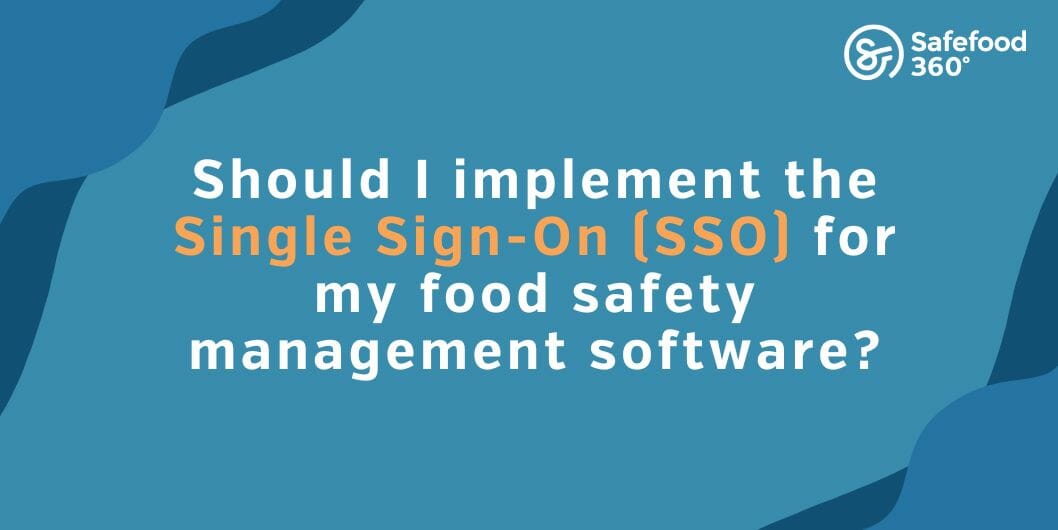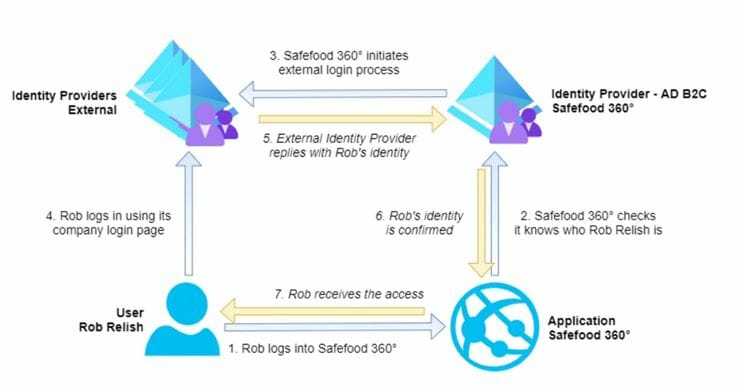Should I implement single sign-on (SSO) for food safety management software?
Keeping your food safety handlers’ personal information secure is imperative as a food-related business owner. A significant step in achieving this is by implementing a robust authentication mechanism that secures the personal data of your customers. In recent years, Single Sign-On (SSO) has become popular for businesses looking to enhance customer data security.
In this article, we’ll explore the benefits of SSO and how it can improve the security of your food safety management software across your food-related websites. We’ll also delve into the potential drawbacks of SSO and help you determine whether it’s the right fit for your business.
Don’t miss our latest product updates and whitepapers. Subscribe Safefood 360° newsletter now.
What is Single Sign-On (SSO)?
Single Sign-On (SSO) is an authentication mechanism allowing users to access multiple applications with a single login credential. With SSO, users need only log in once to gain access to all applications in the network, eliminating the need to enter login credentials repeatedly. This not only streamlines the login process but also enhances the security of personal data.
Benefits of using Single Sign-On in your food sites:
1. Improved Security
One of the most significant benefits of SSO is improved security. SSO significantly reduces the risk of password-related security breaches, as users must enter their login credentials only once.
2. Simplified User Experience
SSO simplifies the login process for users by reducing the number of times they need to enter their login credentials. This enhances the user experience and improves customer satisfaction, making it a key consideration for businesses prioritising customer experience.
3. Increased Efficiency
Implementing SSO can increase efficiency by reducing users’ time logging into multiple applications. This is especially important for food sites, where network connections or Wi-Fi signals may only sometimes be reliable. SSO can improve productivity and save time for food safety handlers by reducing the time spent logging in.
4. Reduced Support Costs
With SSO, users are more likely to have less issues with their login credentials, as they don’t need to remember another set of passwords to access the devices & accounts. Thus this reduces the number of support requests related to login issues, ultimately lowering support costs for your business.
Conclusion
In conclusion, implementing Single Sign-On (SSO) can significantly enhance the security and user experience of your food safety management software across your food-related websites. Safefood 360° applied ADB2C, powered by Microsoft, to enable our users to access the software seamlessly. If your food safety management software does not support SSO, we recommend submitting a demo request to learn more about how SSO can benefit your business.
If your food safety management software does not support the Single Sign-On, please submit the demo request to understand how it helps your company.
Safefood 360° is an innovative software designed by food experts, and it is dedicated to food manufacturers to work for a safer world. Subscribe to our newsletter for the latest food safety news. If you would like to have more details about how to ensure the food safety of your company, submit a demo request here.





Leave a Reply
Want to join the discussion?Feel free to contribute!